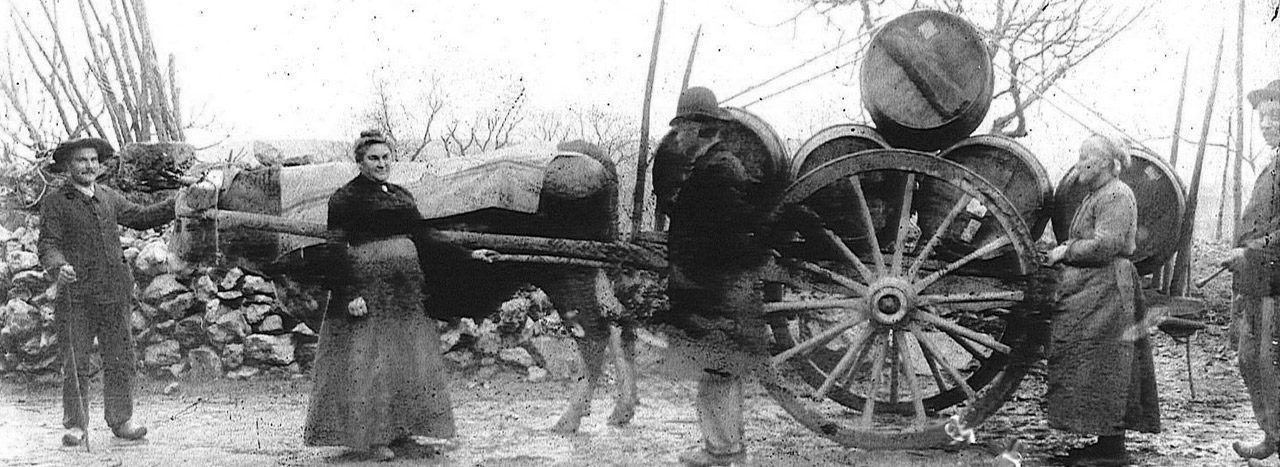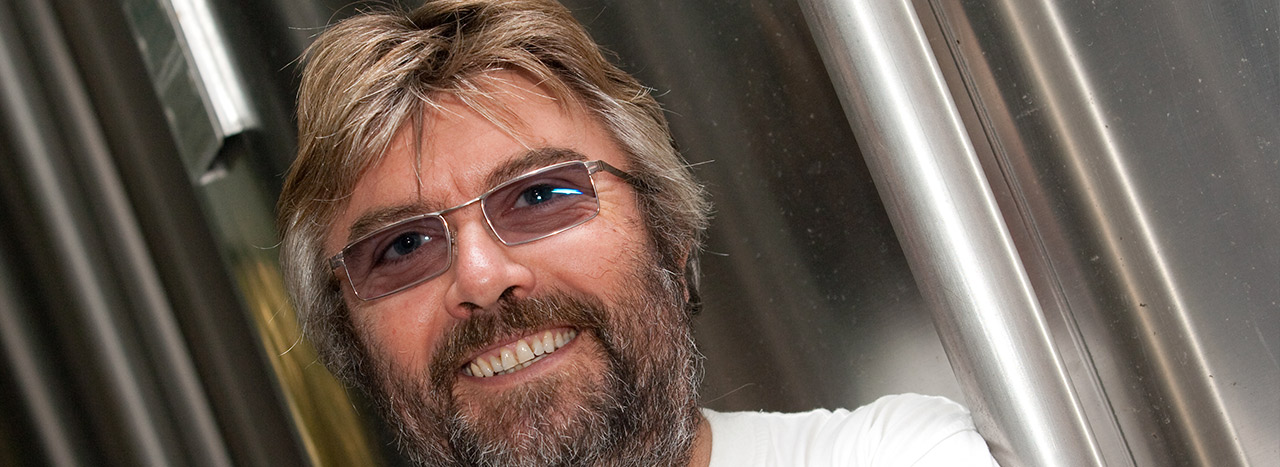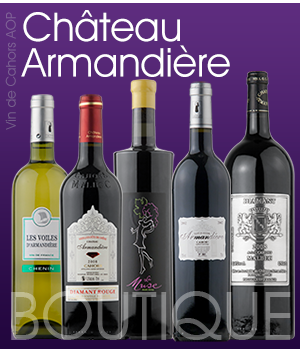A WINEMAKING FAMILY ALONG THE RIVER LOT
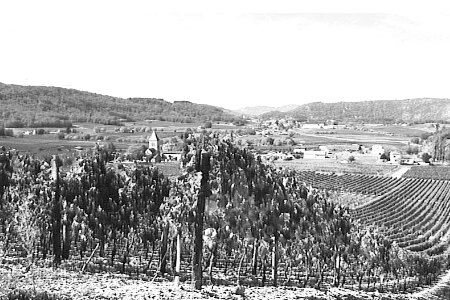
Under the reign of Louis XIV, the river Lot was tamed and channelled for ease of travel.
In 1650, the Attorney General, allowed the Departmental Council of Parnac to manage the area.
The Navy’s State Secretary Colbert (1665-1683) allowed locks to be created along the canals between Cajarc and Aiguillon, which helped further cultivate sea travel and trade for a further 150 years.
Jean Bouyssou, born in 1730.
Many barges from Aveyron to Bordeaux transported chestnut wood (to make barrels) as well as coal.
As they were passing through many vineyards, the barges were also transporting wine. On their way back to Aveyron, they would load up with merchandise received in Bordeaux from overseas: spices, dried fish and fabrics to bring home.
The towpaths were bustling and busy with trade.
Sea farers were able to take advantage of the fast moving current to arrive quickly in Bordeaux.
However, life on a barge was also dangerous and many boats used to sink during trips. It is for this reason the chapel ‘Notre Dame de l’Isle’in Luzech was built, in memory of those who died.
In 1783 Port de l’Angle was faced with the strongest flood of the river Lot.
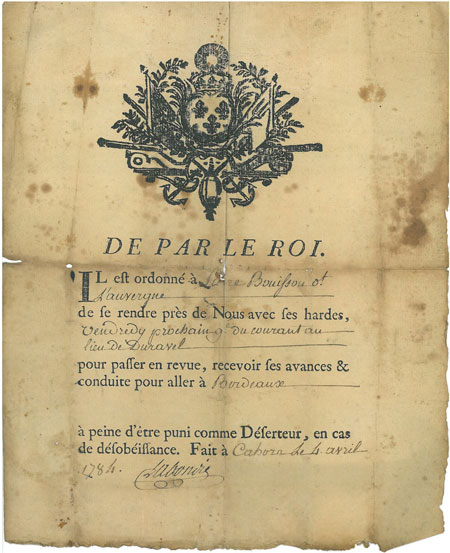
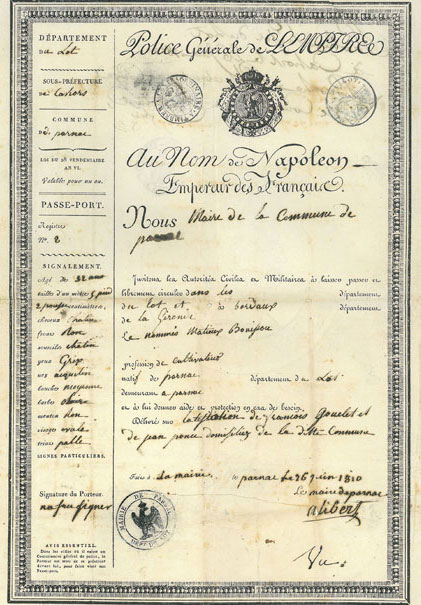
Pierre Bouyssou, born in 1754.
Pierre Bouyssou took part in the French revolution, having been drafted to war and sent to Rochefort.
In May 1814, he became a ferryman at Port de l’Angle on the Lot river.
This passage allowed people, goods and machinery, to cross over the Lot from Caillac to Parnac.
This, in turn, also helped develop commerce in the area. The ferryboat travelled from the right bank to the left bank, allowing the population of Caillac (627 habitants) and of Parnac (1,784,450 habitants) consisting of women, men, children to cross over with harnessed carts filled with grain and feed.
Trade grew and Pierre was also a winegrower in this very important wine-producing region of “Cadorques”, producing red and white wines.
Mathieu Bouyssou, born in 1778.
Fisherman, winemaker, seaman and captain. With the revolution of 1789 and all the changes that followed, Mathieu Bouyssou never really new what he wanted to do; which is perhaps why he was so indecisive regarding his job. However, he knew he wanted to be where he could be the most useful.
Each village had its port, its ship construction sites (to make barrels) and the inns were well frequented (Douelle).
In October 1793 “We do not joke around with grapes”: a ban was placed the 14th of October against harvesting grapes, forbidding marauders and their wild dogs with the threat of a 50 pound fine and a shooting.
Jean-Mathieu Bouyssou, born in 1830.
Like his father, Jean-Mathieu became a captain. He then decided to get involved in constructing safer and stronger barges, which helped to greatly reduce the number of shipwrecks.
Martin Bouyssou, born in 1869.
Martin Bouyssou was captain of his own boat “le Vainqueur” (the winner). Later, (in 1890) he obtained a franchise to dig sand and gravel from the canal beds in Luzech and Parnac (Bourrut) which would largely ease the channel for travel.
During this time, the vineyards in Cahors were much larger than those in Aquitaine and the Rhône. “The Black wine” was at its peak!
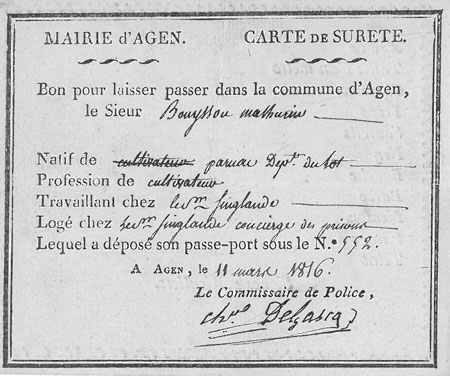
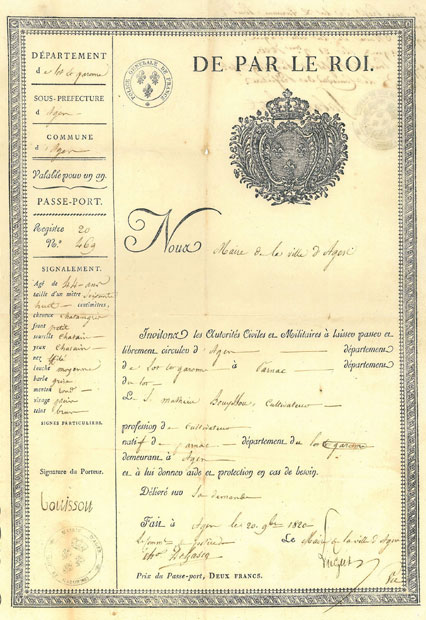
Armand Marc Bernard Bouyssou, born in 1903.
A farmer, Armand Bouyssou’s speciality was as a strawberry cultivator (Strawberry cultivating in the Lot valley from 1895 to 1970; the label “Las perlos d’El Quercy”.)
When he was younger, he also served in the Moroccan War in aviation.
Later, Armand helped in replanting the vines destroyed during the tragic 12 year episode of the “Phylloxéra” insect attack.
In 1947, with an agricultural group, he then went on to create the cooperative “Côtes d’Olt” which contributed to the development of the Cahors wine, finally obtaining an AOC in 1971. The railway was also a great help in developing the region’s economy.
Then, in 1927 the Lot region suffered a huge flood, which pushed Armand in 1934 (who was at the time Town Councillor) to put forward a proposal to build a bridge between Port de l’Angle (in Parnac) and Caillac.
Even though this bridge was never built, this project can be seen on the ordnance survey map.
Pierre Bernard Bouyssou, born in 1931.
Still diligently working on the estate at Port de l’Angle, Pierre Bouyssou gained the label «Fraise du Quercy». This production was dispatched twice a day to Rungis.
In addition, Pierre also produced tobacco, apples and grapevines, the latter becoming his main activity. His work contributed to doubling the AOC vineyard surface areas.
Pierre also created his own nursery of vines so as to optimise rapid growth.
Bernard Bouyssou, born in 1959.
(What a vintage !) Today’s owner Bernard Bouyssou launched Château Armandière in 1997.
The Lot is still here, peaceful and gentle with house-boats sailing on the river.
And just opposite Port de L’Angle lock you will see Château Armandière, a nice stop you don’t want to miss. A lovely place to visit and spend a welcoming time with other wine lovers of “Black wine”.
« Il n’y a de grands vins sans grandes rivières… »
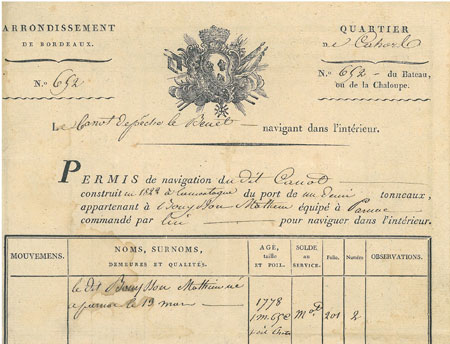
A life among the vineyards by a river.
It has been over two centuries since the Bouyssou family moved to Parnac.
From the time Jean Bouyssou (in 1754) who helped develop a the large vineyards in Cahors, which began in the 9th century, it kept expanding thanks to many people and a healthy economy, finally attaining 80,000 hectares of land.
The economy flourished and reached its peak between 1750 and 1840.
Unfortunately, this did not stay this way, as The Phylloxéra insect pest arrived in La Rochelle, then in Cahors, destroying all the wines between 1885 and 1897. Then, around 1905, a group of resolute men courageously tried again and replanted the “Auxerrois” and “Cote Noir” grapes. Despite their efforts, they were prevented from continuing due to the First and Second World Wars, only having time to plant around 2,500 hectares.
They had to wait for Georges Pompidou (former French president 1911-1974) who lived on the banks of Cajarc, who helped them obtain in 1971 the AOC classification label for the Cahors vineyards. During the twenty years that followed, the areas planted with vines have doubled to 5,000 hectares.
Nowadays, the Malbec grape variety is recognized around the world. Its plantation has extended and moved on to the best soils which allow for an amazing selection of “Vin Noir de Cahors”.



